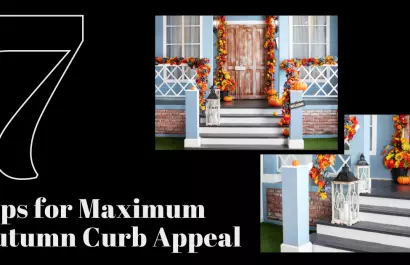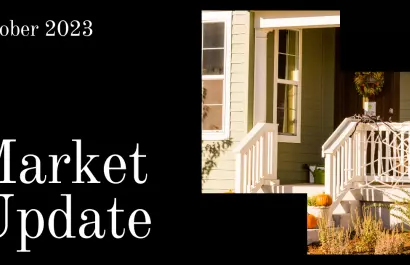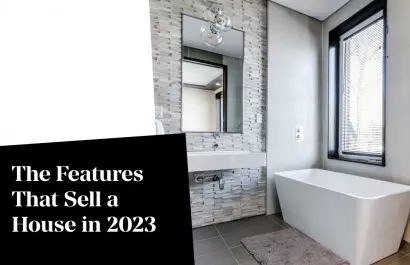Enter your email address below:


Home Buyers Remain Reluctant, Even With Lower Rates This Month
Mortgage rates are now lower than a year ago, but house hunters remain cautious Mortgage rates have been holding mostly steady this month, after dropping nearly a half percent from their peak earlier this year, Freddie Mac reports. “Despite these lower rates, buyers continue to pause, as reflected in tumbling new and existing home sales data,” says Sam Khater, Freddie Mac’s chief economist. The National Association of REALTORS® reported this week that existing-home sales in June nationally fell 5.4% compared to a year earlier. New-home sales also fell, down 7.4% compared to a year ago and the lowest pace since November 2023. Locally in the Chicagoland area, for June, the number of existing-home sales is down -15.1% from a year ago, the medium home sale prices is up 10.1% and new home listings are up 4.4% from a year ago. Realtors in the area report that sellers have shifted their mindset and are now more aggressively negotiating prices downward than before the pandemic. Sellers have noticed that buyers are not flocking in hordes to new listings as before or getting multiple offers. It has become a buyers market. With home inventory rising and home sales down, why are buyers still sitting on the sidelines? “Many potential buyers are remaining in a holding pattern due to elevated mortgage rates that averaged near 7% in June,” says Carl Harris, chairman of the National Association of Home Builders. “However, moderating inflation suggests lower interest rates in the months ahead and that should bring more buyers off the sidelines.” According to recent comments by Fed Chairman Jerome Powell, rate cuts are back on the table with the downward inflation trend and might happen sooner than previoulsly thought. Lets see what happens this week as the Fed reports to Congress. Emergency rate cut, anyone?? That could help home buyers handle the higher home prices, with existing-home prices surging to an all-time high in June, reading a median of $426,900 nationally. At this week’s average 30-year fixed mortgage rate of 6.78%, with a 20% down payment, a household would face a monthly mortgage payment on a median-priced existing home of $2,222, says Jessica Lautz, NAR’s deputy chief economist. Housing affordability and still-high inflation remain pressing issues holding many would-be home buyers back. Indeed, real estate agents in the Mid-Atlantic region report that affordability was the main reason their clients paused their home search over the past six months, with about half citing high prices, not enough homes in their price range, or high mortgage rates. “With mortgage rates hovering around 7% and home prices continuing to rise, financing is a growing challenge for buyers, and this is beginning to impact a buyer’s ability to make it across the finish line,” says Lisa Sturtevant, Bright MLS’s chief economist. Bright MLS data shows that a rising percentage of sellers—14%, as of June—had a contract fall through due to the buyer’s inability to secure financing.
Read More

7 Tips for Maximum Autumn Curb Appeal
Autumn is one of the most magical times of year to make your home stand out. The vibrant foliage, crisp air, and cozy vibes that come with the season provide ample opportunities to enhance your home's exterior. Whether you're preparing to sell your house or simply want to give your property a seasonal facelift, these seven tips will help you achieve maximum autumn curb appeal. Tip #1: Clean and repair your home The first step is to ensure your home looks well-maintained. Start by thoroughly cleaning the exterior, including windows, siding, and gutters. Remove any dirt, mildew, or debris that may have accumulated over the summer. If there are any cracks, peeling paint, or damaged shingles, address them promptly. A well-cared-for home not only looks better but also gives potential buyers confidence in its overall condition. Tip #2: Tend to your fall landscaping Autumn is a season of change, and your landscaping should reflect that. Trim overgrown bushes and trees, and clear away fallen leaves regularly. Don’t neglect your lawn care just because summer is over, either. Keep up on regular mowing—albeit at longer intervals. Consider adding mulch to your flower beds to give them a fresh, manicured look. Plant fall-blooming flowers like chrysanthemums, asters, and ornamental kale to add a burst of color to your yard. A well-kept garden and lawn can make a significant difference in the overall impression your home makes. Tip #3: Bring in some potted plants Potted plants are a versatile addition to your autumn curb appeal strategy. Consider placing pots of seasonal flowers or ornamental grasses near your entrance or along the walkway. Pumpkins, gourds, and colorful mums arranged in containers can instantly add a touch of fall charm to your home's exterior. Don't forget to water and maintain these plants regularly to keep them looking vibrant and healthy. Tip #4: Incorporate fall colors Autumn is synonymous with warm, earthy tones. To create cohesive and inviting curb appeal, incorporate these colors into your exterior decor. You can do this by choosing fall-themed throw pillows for your outdoor furniture, updating your front door to a rich hue like deep red or burnt orange, or investing in a colorful welcome mat. These subtle touches will make your home feel seasonally appropriate and welcoming. Tip #5: Decorate with subtlety While autumn decorations can enhance your curb appeal, it's crucial to strike the right balance. Avoid going overboard with excessive decorations that can overwhelm potential buyers. Opt for tasteful, understated pieces like a seasonal wreath on your front door, a cozy outdoor blanket draped over your patio furniture, or a few well-placed pumpkin and gourd arrangements. Less can often be more when it comes to seasonal decorations. Tip #6: Upgrade your outdoor lighting As the days grow shorter, proper outdoor lighting becomes increasingly important. Consider updating your outdoor light fixtures to create a warm and inviting ambiance. Soft, warm-toned lighting can make your home feel more welcoming, and well-lit pathways and entryways not only look beautiful but improve safety, too. Tip #7: Make your front entrance charming Your front entrance is the focal point of your home's curb appeal. Pay special attention to it by adding a few charming touches. A clean and well-maintained porch, tasteful decorations, and a cozy seating area can make a big difference. Ensure that the entrance is organized and clutter-free, allowing potential buyers to envision themselves entering their new home. Autumn is a fantastic time to boost your home's curb appeal. By following these seven tips, you can create a welcoming and visually appealing exterior that leaves a lasting impression on potential buyers and guests alike. Remember that a little effort can go a long way in making your home stand out in the autumn real estate market.
Read More

The Top 3 Things to Consider When Buying a Home
When you’re shopping for a home, you’re likely to visit multiple properties before you find The One. Some people know which house they want to buy from the moment they walk through the door, but for most people, figuring out which home is right for you takes a significant amount of thought and consideration. This process can become more overwhelming the more options you have available to you—but don’t worry. Simplifying is easy, and you can do it by prioritizing these top three considerations. #1: Price The first and most obvious consideration when buying a home is the price. When you’re house hunting, it’s essential to establish a realistic budget and stick to it. While it's tempting to fall in love with a house that stretches your means, overextending yourself can lead to financial stress in the long run. Determine how much house you can afford based on your income, expenses, and financial goals. Consult with a mortgage lender to get pre-approved for a loan, which will give you a clear understanding of your budget. Here are some key points to keep in mind regarding the price of a home: The sticker price If you’ve found a couple of homes you’re interested in, you’re probably already comparing their prices. But it’s not just whether or not each home fits within your budget. It’s also what they offer for the value. The sticker price of one home might be much higher than the other—but if the cheaper home requires a lot of work, the cost might balance out. Consider your options and measure them against your total budget with the help of an expert real estate agent to make the best choice. The cost of homeownership Remember that the purchase price is just one part of the cost of homeownership. You'll also need to budget for property taxes, homeowners' insurance, maintenance, utilities, and if applicable, homeowners association fees. Do some research to figure out the cost of these items in your area, and factor them into your overall budget to avoid any surprises. Negotiation The sticker price of a property isn’t always set in stone. You can (and should) work with your real estate agent to negotiate the best possible price using comparable homes in the area and the current market conditions. This is why working with an expert agent is critical—they can offer you detailed insights about your chosen home, location, and market and help you craft the most competitive offer while getting you the best deal. #2: Location Location is often touted as the most critical characteristic of any property, and for a good reason. The neighborhood you choose can significantly impact your quality of life and of course, your property’s future value. The location will also influence other factors on this list, such as the sticker price of your home, HOA rules and fees, and more. Here are some things to consider: Commute and accessibility When you imagine yourself living in a home, you should also picture what your day-to-day life looks like. Think about your daily commute to work, school, or other essential destinations. Is this location convenient, or will you spend hours stuck in traffic? Also consider the home’s proximity to public transportation you might want to use, highways, and major roads. Neighborhood features, factors, and amenities When considering a home, explore the amenities in its surrounding area, including schools, parks, grocery stores, restaurants, and healthcare facilities. You can use the information to evaluate which home is a better fit for your lifestyle and preferences. Also consider other neighborhood characteristics such as school districts, flood zones, and crime rates. If any of these will influence your life in a significant way, make sure you factor them into your decision-making process. Future development Remember that when you buy a home, it’s recommended that you stay living in it for at least two years—and more is better. This is to help you build equity while you pay down your mortgage, and it allows you to not pay capital gains taxes when you sell again. That means you should be excited to stay in this home’s location for two years or more, and you should also be aware of potential future developments in the area. Areas with planned infrastructure improvements and rising property values may be good long-term investments, but if you prefer an area that’s going to remain relatively the same, you might want to look elsewhere. Additionally, some developments can actually hurt property values if they increase noise or dramatically change the surrounding area’s aesthetic, so do some research before making your decision. #3: Home features Once you've narrowed down your budget and chosen a desirable location, it's time to focus on the specific features of the home itself. This one seems obvious, but considering a home’s features doesn’t mean that it needs to have every single upgrade under the sun. Instead, consider how its features (including its square footage, number of bedrooms, outdoor space, and much more) meet or do not meet your specific needs. Here are key factors to consider: Size and layout While you’re comparing homes, think about the size of each one and its layout. Does it accommodate your current needs and potential future changes, such as a growing family or remote work requirements? How many bedrooms and bathrooms do you need? What about flex space? These are the most basic features, but they’re also the most important because they’ll affect most aspects of your daily life. Condition As mentioned before, a home’s condition will affect both its sticker price and the cost of making it livable down the road. For that reason, you should inspect the property's condition carefully. Even if you’re in the market for a fixer-upper, having a thorough home inspection completed will help uncover hidden issues so you can factor their costs into your budget. Must-have characteristics This is when you can get into the bells and whistles. Besides the basic basics, make a list of features that you need to see and want to see in a home before you’ll consider buying it. This can include a certain style of architecture, smart home technology, outside space, types of finishes, and much more. Just try to limit the items on your “must-have” list to features that you absolutely must have. That way, you have the best chance of finding a home that meets your needs within your budget. Have your list? Now compare the houses you’re looking at to the list and see which one stacks up better.
Read More

Chicago Area Market Update
October Chicagoland area Market Report If you’re thinking about selling your home, it's important to have a good understanding of what’s going on in the area . Knowing the most important data such as the average sales price, the number of homes sold, and days on market will better prepare you to sell your home. Our October market report showcases everything you need to know about Chicagoland's real estate trends. Further down you'll find the stats on local markets like Barrington, Arlington Heights, Long Grove, etc. Click the button below to see the homes that came on the market over the last 7 days in your hometown.
Read More
Categories
Recent Posts










